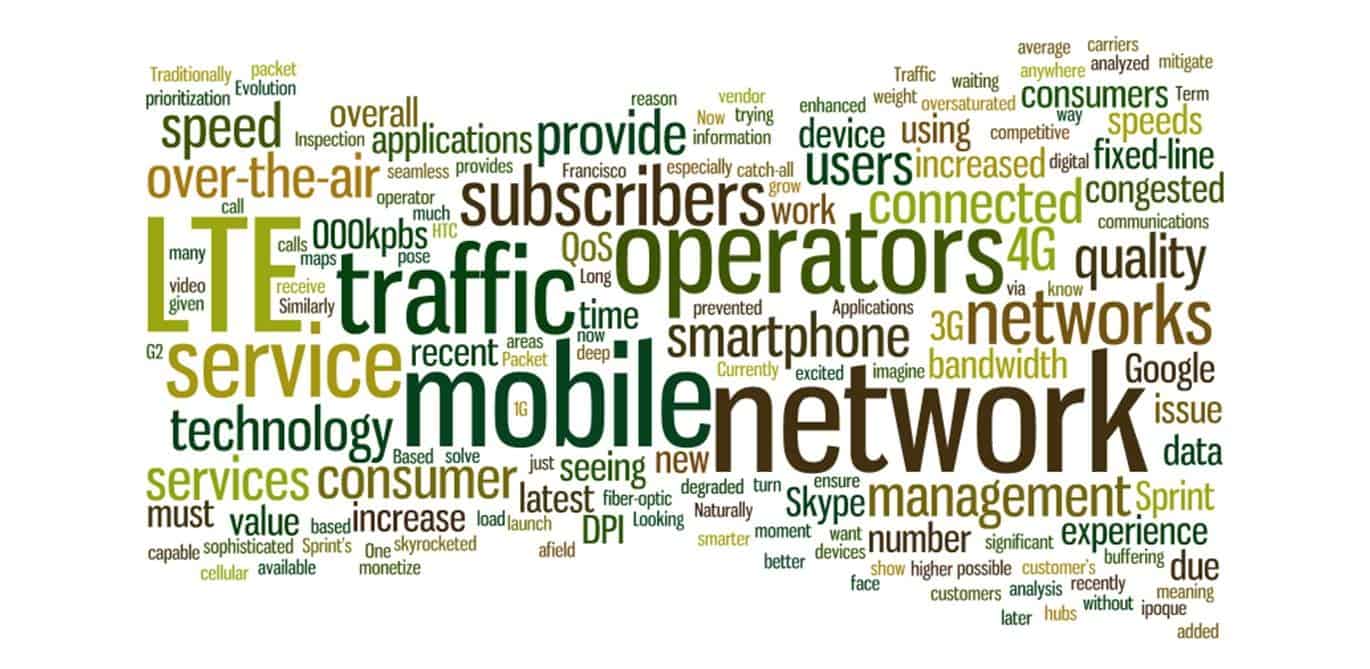 By Hendrik Schulze, CEO and Co-Founder of ipoque
By Hendrik Schulze, CEO and Co-Founder of ipoque
In 1973, the first mobile phone call was made [i]. Now decades later and much more sophisticated, mobile phones are a tenth of the original weight, and 100 times faster and more capable. Traditionally, all information to and from the cellular device was sent over-the-air via a 1G (generation) network with speeds no more than 2.4kbps. Currently mobile devices in the US work over 3G and 4G LTE (Long Term Evolution) over-the-air networks, and average speeds of 2,000kpbs and 100,000kpbs, respectively. Looking at fixed-line operators, network capacity has significantly increased by using fiber-optic cabling instead of the traditional coaxial cable. At the same time, data traffic has skyrocketed, even more than the increase in data speed available. Nonetheless, fixed-line and mobile operators alike must find the best way to provide subscribers with a seamless service if they want to keep and grow their competitive advantage and ROI.
The speed of modern LTE networks has given rise to a new world of possibilities for the connected mobile consumer. Applications and services, such as digital media streaming or Skype video calls over-the-air (OTT), are now possible practically anytime and anywhere due to the increased speed of an LTE connection. While most of us can’t imagine where we would be without it, LTE is still not a catch-all solution. In the US, Sprint has recently excited many customers with the launch of its tri-band smartphone range – meaning the LG G2, Google Nexus 5, or HTC One Max will work across all three of Sprint’s LTE bands for an enhanced service. However, what some subscribers don’t know is that they may receive a degraded service in areas where Sprint has not finished the rollout. Similarly, Verizon Wireless is seeing a massive uptake in its 4G LTE services but seeing bottlenecks in communications hubs New York, San Francisco and Chicago.
A primary reason that LTE networks have become oversaturated is due to the number of highly connected users which has grown exponentially in recent years. In the US 287.4 million subscribers are on 3G or 4G and the number of smartphone users is meant to increase by a further 14.5% by 2016 [ii]. These mobile consumers tend to have significant higher traffic usage than their less connected counterparts, using bandwidth intensive mobile applications such as YouTube and Skype which pose a constant challenge for network operators. We have all had that moment where Google maps just won’t load as we’re trying to locate the restaurant our friends are waiting for us at or the buffering swirl as we try to catch up on the latest sports highlight. This is especially an issue when we’re in a congested city or further afield from civilization.
To mitigate problems with congested LTE networks, network operators must be smarter about their traffic management so that they can provide a greater, more consistent quality of service for their subscribers. To help solve the issue of traffic management that carriers currently face, network operators should turn to the latest ipoque deep packet inspection (DPI) technology, which provides real-time traffic analysis and management based Deep Packet Inspection. Traffic can be analyzed per application, subscriber or device. Network congestions can be detected and prevented before they occur. DPI technology can also provide network operators a jumpstart in traffic prioritization to ensure that the quality of service (QoS) is maintained for the consumer as they switch to more bandwidth heavy applications and to monetize on new services customer’s value most at the same time. According to a recent survey by technology vendor CommScope[iii], 19 percent of smartphone users are most happy with positive network performance. Based on the QoS, consumers will decide the overall value added by their network operator, to determine their overall quality of experience (QoE). Naturally the better the experience, the more loyalty a consumer will show towards their carrier.
The FCC (Federal Communications Commission) recently ruled that it is legal for fixed-line operators to slow the speeds of data-intense internet users. For example, if a subscriber is streaming too much data from Netflix, then the operator could slow-down their Internet access without their permission or warning. Customer QoE is driving change in our industry. Network operators, OTT players and network infrastructure partners looking to maintain a competitive advantage, must figure out how to deliver subscribers an application intelligent, consistent, quality service without interruptions. To be successful, network operators must work to classify application, OTT and subscriber traffic on their network, and enable new business models and revenue streams at a low operational cost for all parties.
Today’s connected consumer is less accepting of signal dropping and network outages. With other networks and competitive price plans to choose from, operators need to do more to guarantee service levels before their subscribers – consumer or enterprise switch their loyalties.
[i] Cnet, April 3, 2013: http://news.cnet.com/8301-1035_3-57577704-94/the-first-call-from-a-cell-phone-was-made-40-years-ago-today/
[ii] Mobithinking, November 2013: http://mobithinking.com/mobile-marketing-tools/latest-mobile-stats/a
[iii] CommScope, August 2013: http://www.commscope.com/NewsCenter/Infographics/Evolution-of-the-G/












